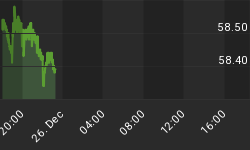The USSR might have imploded two decades ago, but debris from its headlong industrialization drive litter the post-Soviet landscape, and nothing more unsettles the population of the fifteen new nations carved out of the Soviet Union than its nuclear legacy.
The poster child for Caucasian nuclear concerns is Armenia's aging Metsamor nuclear power plant, which provides nearly 40 percent of the country's electricity.
The facility has not only alarmed neighboring Georgia, Turkey and Azerbaijan but begun to receive international notice as well - on 11 April National Geographic ran a story entitled "Is Armenia's Nuclear Plant the World's Most Dangerous?"
Metsamor, 20 miles west of the capital Erevan and 10 miles from the Turkish border, encapsulates the dilemma facing many energy-poor nations heavily dependent on nuclear power - unlike Germany, they do not have the cash or alternatives needed to shutter such facilities and consequently, keep them running while crossing their fingers.
Metsamor, which began operations in 1976, contains two VVER-400 V230 376 megawatt nuclear reactors generating about 2 million kilowatt hours of energy annually. Many environmentalists regard it as an accident waiting to happen. The Armenian government closed Metsamor's Unit 1 in February 1989 and Unit 2 the next month following a massive December 1988 earthquake which killed more than 25,000, left much of northern Armenia in ruins and caused more than $4 billion in damage.
Perhaps not surprisingly, the facility itself is a hostage to the vicious politics disrupting the Caucasus. Armenia went to war with Azerbaijan in February 1988 over the disputed Nagorno-Karabakh enclave. During the clash, which lasted until May 1994, Azerbaijan blockaded roads, rail lines and energy supplies, leading to severe energy shortages in Armenia. In 1991 pressure to restart Metsamor increased after a natural gas pipeline from Turkmenistan was blocked by a Turkish and Azeri fuel embargo. By the winter of 1994-95, residents of Yerevan often had only an hour or two of electricity daily, which the restart of Metsamor's Unit 2 in October 1995 increased to 10-12 hours per day and has been running ever since, environmentalists be damned.
Earlier this month however Metsamor was brought offline on 11 September and will resume operation on 27 October. The EU has classified the Metsamor's reactors as the "oldest and least reliable" category of all the 66 Soviet reactors built in Eastern Europe and the former Soviet Union.
Azerbaijani National Academy of Sciences President Mahmud Karimov recently voiced his country's concerns over Metsamor, stating, "The European Union also expressed the need to close the plant. Despite regular inspections of the plant by international organizations, the results of these inspections are kept secret and no information is given to Azerbaijan about them. The countries of the region - Azerbaijan, Turkey and Georgia - have repeatedly proposed allowing the specialists of these countries to examine the Metsamor nuclear power plant. But the reports on Metsamor are not available to these three countries. The Armenian side says ten different committees have checked the Metsamor NPP in 2011. But the test results are not available to neighboring countries, that is, the inspections lack transparency."
Quite aside from its aging technology, Metsamor, high in the mountains, lacks suitable water resources to use as reactor core coolant in the event that an earthquake damaged the facility, while Armenia's parlous fiscal situation means that its government lacks financial resources to address the consequences of a possible accident. Metsamor is one less than a half dozen remaining nuclear reactors of its kind that were built without primary containment structures.
Nor is the only threat to Metsamor's operations coming from its aging technology - more than 140 workers at Metsamor have threatened to quit their jobs if their wages are not raised, Radio Free Europe/Radio Liberty's Armenian Service reported.
Metsamor Director Ashot Markosian told RFE/RL on 23 September that despite the workers writing him directly, the plant currently lacks the funds for a salary increase. Earlier this month several Metsamor employees sent an open letter to Armenia's presidential staff, the Prime Minister as well as European branches of the International Atomic Energy Agency, accusing Metsamor's chief engineer Movses Vardanyan of abusing his official position, nepotism and embezzlement.
But no mind - Armenian authorities have said they will build a new $2-5 billion nuclear power plant to replace the aging Metsamor facility, which will operate at twice the capacity of the Soviet-built power station. In 2004 the European Union's envoy called Metsamor "a danger to the entire region," but Armenia later turned down the EU's offer of a 200 million euro loan to finance Metsamor's shutdown.
Aging nuclear technology, a disaffected work force in a facility located in a seismically active region - what could possibly go wrong?
Time for the EU to up its bribe - err, loan.
By. John C.K. Daly of Oil Price















